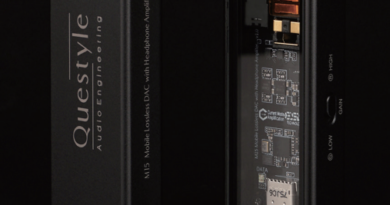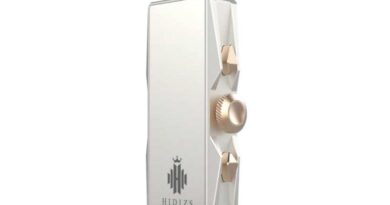Focal Azurys Closed-Back and Focal Hadenys Open-Back Headphones REVIEW (Second Opinion) – Like Water For Chocolate
Azurys and Hadenys are loaners from Focal for review purposes; have already been shipped back to them. Can be bought on Amazon or here: https://www.focal.com/products
Broadly speaking, manufacturers send us gear to review either in the hopes of garnering praise for marketing purposes or to solicit genuine feedback to assist with development/tuning. I suspect Focal falls into the former camp—they’re a renowned company who really don’t need advice from some schmuck in Chicago.
That said, I can’t help but wonder why they chose to use the identical honeycombed design on the open-back Hadenys and closed-back Azurys as they used on the wireless Bathys (review here)—aside from it being a bold, polarizing aesthetic, it would seem to discourage even their most ardent fanboys from buying different models which look exactly the same. At least the logos on the wired models don’t light up.
Externalities aside, I was surprised at how comfortable the Hadenys and Azurys are—light, with soft cloth earpads and very modest clamping pressure; I actually found them better suited for portable use than their heavier, tighter-fitting wireless sibling. Lack of a balanced cable is a demerit, though they are very easy to drive with a modest dongle and don’t need a lot of juice to show their essence.
I listened to the Azurys first, which were fine—generally balanced, with some emphasis on the low end. Said low end isn’t the punchiest, fastest or most sculpted—decay is fairly slow and there’s a bit of bleed into the lower mids, but it correspondingly sounds pretty natural. Very smooth and non-fatiguing, although your ears do get drawn to the mildly elevated bass spectrum.
Soundstage is narrowish but enveloping and instrument placement is accurate. High end has greater extension than the Bathys, but is still slightly rolled-off; something like the Senn HD650 or esp. good planars like the Audeze LCD 2 are more transparent and present more fine detail. Overall, I found the Azurys to be very competent but unmemorable—they’re smooth and non-fatiguing, but not revealing enough for studio use and not thumpy enough for headbanging.
The open Hadenys, OTOH, are an immediate grabber—esp. considering the modest premium over the Azurys, they are a night-and-day improvement. 3D stage (with considerable width but limited depth), hard hitting-but controlled low end, lots of space between instruments and a whole bunch of PRAT.
As with the Azurys, treble is slightly rolled off and doesn’t hit the highest frequencies; correspondingly, the Hadenys avoids the aggressive brightness of many planar peers and the analytical (i.e. boring) quality of so-called “studio” phones—these things aren’t so ruthlessly revealing as to ruin the ubiquitous flawed recordings in my collection. It’s not the most organic tonality you’ll hear—there’s a slight blunting of cymbal crashes and piano keys, but it’s damn good.
Value? You can spend a couple of hundo less on a Senn HD650 or Grado RSX and get a purer tonality, but the Hadenys has more bass power and a fuller sound; it’s also more comfortable than the Senn and better-built than either.
Moving up to good $1000 planars from Hifiman, Aeon, etc. will yield more sonic nuance but a lesser sense of scale and dynamics—this Focal jumps. I’m too hyper to frequently deploy my full-sized wired cans, but the Hadenys are enough of a step-up to change my habits, and I’m a likely buyer.
Disclaimer
Our generic standard disclaimer.







